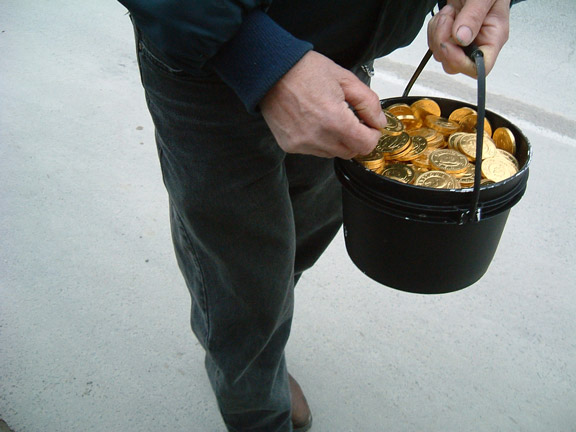 Text by Pat Gerbrandt
Text by Pat Gerbrandt
Do you celebrate St. Patrick’s Day because you want to catch a leprechaun in order to find his pot of gold? The little shoemaker elf is a whimsical bit of Irish legend, but the real treasure is in the legacy left by the Apostle of Ireland.
Born in Wales about AD 385, the man who came to be the patron saint of Ireland was sold into slavery to Ireland when he was 16. There, he worked for 6 years as a shepherd on the slopes of Slemish.
While in captivity he studied and turned to religion. He escaped slavery and later returned to Ireland as a missionary, determined to convert the people to Christianity. Eventually, he entered the monastery at Lérins and studied at Auxerre for 12 years. When St. Palladius died in 431, Patrick was consecrated (432) in his place by St. Germanus of Auxerre.
Kissing the blarney stone (named after the village of Blarney) to obtain the gift of beautiful speaking ability is may be intended as a tribute to the man whose eloquent words and example succeeded in turning many from paganism to Christianity. This upset the Celtic Druids and Patrick was arrested several times, but escaped each time. He traveled throughout Ireland, establishing monasteries across the country. He also set up schools and churches.
At first, the king was indignant at Patrick’s challenge of paganism but eventually he respected Patrick. Putting an end to pagan practices probably gave rise to the legends which claim St. Patrick drove snakes out of the country. In many old pagan religions, serpent symbols were common and often worshipped.
Patrick was about 60 years old when Pope St. Leo I established him in the archiepiscopal see at Armagh. St. Patrick’s mission was successful; Ireland was almost entirely Christian by the time of his death. Patrick’s understanding of the social structure of the country and his wisdom are reflected in the way he provided leadership. He developed the Celtic abbot-bishop system based on an organization of tribal units, just as he had methodically converted the people, tribe by tribe. Patrick insisted on codifying the country’s traditional laws, and modified them to harmonize with Christian practice. Harsher laws, dealing with slaves and taxation of the poor, were mitigated. He introduced the Roman alphabet. In 457 he retired to Saul, where he died in 461 at the age of 76, one of the most respected missionaries ever.
”Confessions”, an apology of his life’s work, written near the end of his life, is the primary source of reliable information about St. Patrick. In “Epistola”, he denounced British mistreatment of Irish Christians. Saint Patrick described himself as a “most humble-minded man, pouring forth a continuous paean of thanks to his Maker for having chosen him as the instrument whereby multitudes who had worshipped idols and unclean things had become the people of God.”
Legends say St. Patrick chose the shamrock to represent how the Father, the Son, and the Holy Spirit could all exist as separate elements of the same entity, and his followers adopted the custom of wearing a shamrock on his feast day.
St. Patrick died on March 17. To those who celebrate its intended meaning, St. Patrick’s Day, which occurs during the Christian season of Lent, is a traditional day for spiritual renewal and offering prayers for missionaries worldwide.
Irish Blessing
May the roads rise to meet you;
May the winds be always at your back.
May the sun shine warm upon your face,
The rains fall soft upon your fields,
And, until we meet again
May God hold you in the hollow of his hand.
Latest posts by Canadian Home Trends (see all)
- Layer Up – Wrap Your Bathroom In Light - January 5, 2026
- The Power of Rest: Elevate Your Wellness with Better Sleep - January 5, 2026
- VERSATILE KITCHEN DESIGN - January 5, 2026






